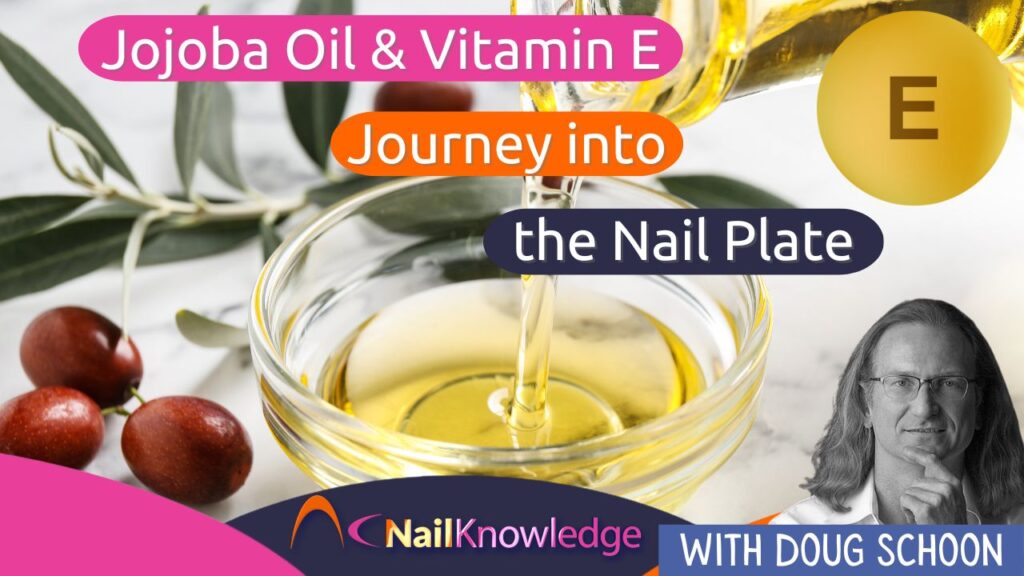Have you ever wondered how certain ingredients like jojoba oil and Vitamin E work their magic in nail care products? One reader’s query led us to delve into the science behind these ingredients and their ability to penetrate the nail plate. Join us as we uncover the mysteries behind jojoba oil, Vitamin E (tocopherol), and their role in promoting healthy nails.
Entendendo a terminologia: Tocoferol vs. Vitamina E nos cuidados com as unhas
First, I want to discuss some terminology. Vitamin E is a food supplement name for a substance that is properly named “Tocopherol”. In other words, tocopherol is the correct cosmetic name that should appear on the label and the term vitamin should only be used for foods and ingested nutritional supplements. I’ll use the correct cosmetic ingredient name, of course, and so should manufacturers and marketers.
Tamanho da molécula e penetração na unha: Tocoferol vs. Óleo de Jojoba
O tocoferol é uma molécula muito grande e moléculas desse tamanho normalmente têm dificuldade para penetrar na placa ungueal, mas o mesmo pode ser dito do óleo de jojoba. Certas moléculas encontradas no óleo de jojoba têm um formato muito longo e elegante, em vez de um formato grande e volumoso, o que pode realmente fazer uma grande diferença. Concordo que as moléculas de vitamina E teriam dificuldade de penetrar sozinhas.
Most would likely sit on or near the surface of the nail plate, but that’s not a bad thing. Why it that? This is where tocopherols protective action is most needed, near the surface where sunlight and oxygen exposure create unwanted and potentially destructive chemical reactions that lead to discoloration and embrittlement of the nail plate and/or nail coatings.
Tocopherol is most needed on or near the surface, and it is less useful deep inside the nail plate or enhancement.
Aproveitamento do tocoferol: a ciência por trás da penetração e da proteção das unhas
Fiz testes com misturas de tocoferol e várias substâncias naturais óleos como o de jojoba and avocado oil and these studies indicated tocopherol did indeed slowly penetrate the nail plate over time and it seemed to concentrate near the surface.
These natural oils do act as carrier solvents for the tocopherol. That is NOT surprising since many vegetable oils naturally contain tocopherol. For example, wheat germ oil is the most concentrated natural source known for tocopherol. Therefore, I’m confident that some tocopherol does absorb, but not large amounts. However, large amounts of tocopherol aren’t needed, since it is highly effective in very low concentrations.
This helps explain why nail oils which contain tocopherol, must be used regularly to ensure that a protective amount of tocopherol is always present. Of course, tocopherol can also be blended into a monomer liquid and/or UV gel to provide similar protective effects throughout the coating. But, the real protective value of tocopherol is when it’s concentrated at the upper surface. Therefore, using a high-quality nail oil with tocopherol is a valid approach to protecting the integrity of both natural and artificial nails.
Clarifying Tocopherol’s Role in Artificial Nail Products
Proteção vs. Absorção
When tocopherol is added to artificial nail products, it’s function is to protect the coating, not the nail plate. I am not aware of any evidence that demonstrates that any useful or significant amounts of “vitamins” can migrate from artificial nail coatings and absorb into the nail plate to provide benefits, so I recommend disregarding those claims until convincing evidence is provided.


